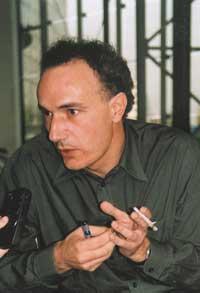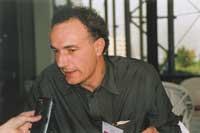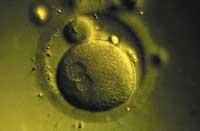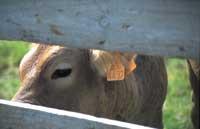Xavier Vignon: “Most researchers have returned to the basics”
Advanced Cell Technology indicated in November that they have managed to clone the human embryo to obtain immunocompatible stem cells. Some have praised the outcome and many others have criticized both ethically and scientifically. What is your opinion?
In my opinion, this news should be considered a provocation and should not be analyzed from a scientific or ethical point of view.

In fact, from the scientific point of view, these investigations have not brought anything new, since the development of the embryo they have achieved has remained behind some cell divisions.
From the ethical point of view they have acted with the ambiguity of US law. This legislation only measures the ethics of research from the financial sphere: there is no money for public research and private research is free. Private companies, like clinics that perform in vitro fertilization (IVF), can use their wives' eggs in their daily activities. This situation was already known, although it only applies in the United States and England.
To decide which strategy to follow in research for therapeutic purposes, a real debate must be created, and I think this new one is a provocation to reinforce the debate.
This is a decision to be made based on the knowledge of the situation of animal research and, precisely, the scarce results of animal research make debate difficult.
There are other ways to obtain stem cells, which have also given encouraging results. How do you see the development of cloning to obtain these cells?
At the moment, there are two techniques for obtaining stem cells: the cultivation of somatic cells present in many tissues of an adult organism and the cultivation of cells of an embryo. The first technique is still not well mastered and the second offers more possibilities to stay in the culture and differentiate in different cell types.
What is the cloning technique currently?
Cloning can now be repeated with some animal species. It is made with cows, rabbits, goats, mice and pigs, although good results are not yet obtained. Cloning is not effective because many embryos do not develop and many fertilization pathologies occur. In addition, about a third of the animals born are not normal and die within a few days.
What are the most common pathologies or abnormalities?
As we have seen, the placenta often does not develop properly. This means that the relationship between the mother taking the fetus and the fetus itself is not good. This causes confusion and compensation. As a result, the fetus gets too fat, which we call LOS syndrome (Large Offspring Syndrome “Great Effect Syndrome”).
But we also find heart, lung, and thymus problems. Timoa is a lower neck gland or contour of the heart that controls most immune responses in the body, so we also find immune system problems.

Why are so many anomalies and diseases occurring?
We still do not know exactly the causes of disease, but there is probably more than one event. We think the problem comes from initial manipulations. To perform cloning we transplant the nucleus of a skin or muscle cell to an obocyte that becomes an embryonic nucleus. After this manipulation we consider that the reprogramming of the genome is not done correctly, and from there most of the anomalies can be derived.
The next step is to improve transfer techniques?
Yes, most researchers have returned to the basics and we have begun to investigate what exactly happens when doing this kernel transfer.
Another fundamental field of research is the study of the cell that provides the nucleus. It is about checking the state of the cell most suitable for reprogramming. If this is known, a proper selection of cells would be made.
Is there currently no selection?
At the moment, there are main ideas that point to the bet on cells in some of the phases of the cell cycle, but it is not a concrete selection. In addition, around the nucleus there are many epigenetic phenomena that must also be investigated. These epigenetic phenomena can alter genetic heritage, but by pathways outside genetic norms. For example, chromatin changes, histone acetylation, etc. are epigenetic phenomena and we believe that they influence the reprogramming of the genome.
Therefore, to improve cloning techniques it is necessary to conduct studies in different areas.
Yes, in our research group some work in molecular biology, others work in genomics... the latter compare embryos made by cloning with proliferated in vitro embryos to know which genes have been removed. We begin to see some differences between gene expressions, but at the moment it is a mere constellation. We don't know which genes are or are long-term.

Others investigate methylation of DNA, which regulates the expression of some genes. As has been seen, in the early stages of the development of the cow's embryo, complete demethylation of chromatin and its subsequent methylation occurs. Methylation is a complex biochemical reaction by which some genes will be activated or inhibited. It seems that this phenomenon is altered by the use of somatic cells or proliferated cells in vitro.
Do cloning techniques change from one species to another?
In general the same technique is used in the cloning of animal species. Small adaptations have been necessary for some species. For example, in the case of the rabbit, the synchronization between the embryonic mother and the embryo with cloning has had to be worked, since embryos are made a little late. Therefore, females who were to receive the embryo had to be in the same phase. Such adaptations have had to be made, but in general the techniques do not change.
Man can be cloned.
Yes, I believe that man can be technically cloned with all the biological risks involved. In short, for the moment, at least 30% of the animals that are born have anomalies, while in the fetal phase 40% of the animals die easily or develop some pathology. Therefore, the technique is not yet effective. In general, less than 1% of the embryos produced become healthy animals.
And, moreover, we still do not know if cloned animals alive with complete certainty do not have a small change. They are apparently healthy, but the epigenetic phenomena I referred to earlier do not have the same copies as the initials.
Leaving aside the ethical point of view, there is a biological argument enough not to make human cloning. From now on, improving the cloning of animals can come the time, but we are not yet in it.
However, a few days before Advanced Cell Technology claimed to have cloned the human embryo, they reported the good health of 24 cloned cows.

I want to underline that cloning, in the long run, can bring unfamiliar consequences. As we have seen, from birth we can get those that are normal, but also clones with serious physiopathologies that cause death from the beginning. These results have been obtained with about 30 cows and mice. The problem posed by Advanced Cell Technology is that there is no reference witness group. In science, the witness team is important!
But why clone?
Cloning will be one more tool for animal selection, something important in agriculture. For example, if a cow provides 10,000 liters of milk a year and from a cell of that cow the same cow is generated, you get twice as much milk. It is not the only way to make the selection, but it will be one more tool.
It will also be used to save endangered animals and is already used. Below a number of animals, natural reproduction is not sufficient for the survival of the species. Cloning is the only way to reach the amount initially needed. In France, for example, a species of cow is in critical condition: only three females remain. Thanks to cloning a complete group of cows will not be achieved, but as many cows as necessary for the survival of the species through natural reproduction.
Another important application is the possibility of cloning changing genes. From the point where cloning is done with cells present in the laboratory, it is very possible that these are genetically transformed before being used for cloning. The goal may be, for example, that the cow can form a molecule of pharmaceutical interest in milk. In this type of manipulation there are great pharmaceutical interests and in England and the United States many private companies are investigating in this field.
Buletina
Bidali zure helbide elektronikoa eta jaso asteroko buletina zure sarrera-ontzian











